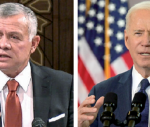You are here
How to engage with China
May 31,2022 - Last updated at May 31,2022
LONDON — The world order is at risk of a lasting split, with the United States and its allies on one side, and China and its partners on the other. As US Treasury Secretary Janet Yellen noted at an Atlantic Council event last month, this outcome is far from desirable and the US must work with China to prevent it. But, practically in her next breath, Yellen advocated actions that could thwart such an effort.
In Yellen’s view, the US should be deepening ties with countries that have “strong adherence to a set of norms and values about how to operate in the global economy and about how to run the global economic system”. In her view, picking partners that are “committed to a set of core values and principles” is the key to effective cooperation on important issues.
But where does that leave countries with different values and principles? How can the global institutional architecture survive if countries limit open engagement only to those who view the world the same way they do? If the West excludes a power like China from its multilateral arrangements, what can China do other than spearhead alternatives?
A better approach to China would be based on three key considerations. The first is that multilateralism is impossible without China. Not only is China the world’s second-largest economy; it also has one of the world’s largest financial systems, with assets amounting to nearly 470 per cent of its GDP. China’s gross national savings, equivalent to about 45 per cent of GDP, are similarly massive.
Moreover, China is the world’s largest bilateral lender, and it contributes substantially to multilateral financial institutions, and not only those built and led by the West. In fact, and this is the second consideration, China has assumed an important role in the international financial architecture, as both a member and builder of institutions.
In recent years, China has pioneered the creation of two new regional multilateral development banks. Both the Asian Infrastructure Investment Bank (AIIB) and the New Development Bank (NDB) are designed to complement the international financial architecture, proving that China can lead institutions, act as a major provider of development finance, and be a “responsible stakeholder” in a system created by the US and its allies.
But, in a sense, that system is failing China. At the International Monetary Fund (IMF), China’s voting share is 6.1 per cent, slightly lower than Japan’s 6.2 per cent and well below the 16.5 per cent US share. Their shares at the World Bank are 5.4 per cent, 7.28 per cent, and 15.5 per cent, respectively. Though this is clearly out of line with China’s economic weight, the pace of reform has been slow, not least because of American obstruction, a point Yellen brushed aside when discussing the need to modernise the IMF and the World Bank.
This gives China’s leaders good reasons to consider other options, including decoupling the institutions it leads from the existing multilateral system and creating new ones. The result would be a fragmentation of the global financial safety net, which would become less responsive, predictable, and inclusive, inevitably leaving some countries exposed to systemic risks.
The third consideration that must shape the West’s approach to China is the thorniest: China’s economic and political systems, and thus China’s objectives and incentives, differ sharply from those of the G-7 countries. This is a major source of tensions between the West and China, and a key reason why officials like Yellen advocate the easier engagement that is possible with “likeminded” countries.
To be sure, navigating conflicting perspectives, ideologies, and interests is challenging. This has been apparent during Russia’s war against Ukraine, which China has refused to join the G-7 in condemning. But, as frustrating as China’s reticence is, confronting the country’s leaders will not help matters. Nor will excluding China from multilateral arrangements.
Instead, the G-7 countries should focus on identifying areas of common interest where the risk of misunderstanding and disagreement is low and seize whatever opportunities for cooperation there may be. Climate change, and, in particular, climate finance, is an obvious example, but it is hardly the only one. While Western media have often presented China’s leaders as intransigent or even deceitful, China has continued to engage constructively with the West on a variety of economic and financial issues.
One example is debt management. Late last month, China joined Zambia’s creditor committee and committed to the G-20’s Common Framework debt-restructuring process. It is a good sign not only for Zambia, whose debt burden currently amounts to nearly $32 billion, or around 120 per cent of GDP, but also for other heavily indebted African countries.
Even with regard to Russia’s war in Ukraine, there is some convergence between Western and Chinese positions, albeit for very different reasons. In early March, the AIIB, citing the financial risks, froze all business with Russia and Belarus, and the NDB announced that it had “put new transactions in Russia on hold”.
This shows that appealing to shared values is far from the only way to convince countries to advance shared goals; practical considerations are also very powerful. In dealing with China, the West should attempt to build international dialogue and policy cooperation on a foundation of concrete common interests.
Contrary to the prevailing narrative in the West, cooperation with China has been the norm for decades. But if G-7 leaders decide to make “core values” the basis of international cooperation, this could well change. A global economy in which China and the G-7 follow separate, non-converging paths will leave both sides worse off.
Paola Subacchi, professor of International Economics at the University of London’s Queen Mary Global Policy Institute, is the author of the recent report, “China and the Global Financial Architecture: Keeping Two Tracks on One Path”. Copyright: Project Syndicate, 2022.












